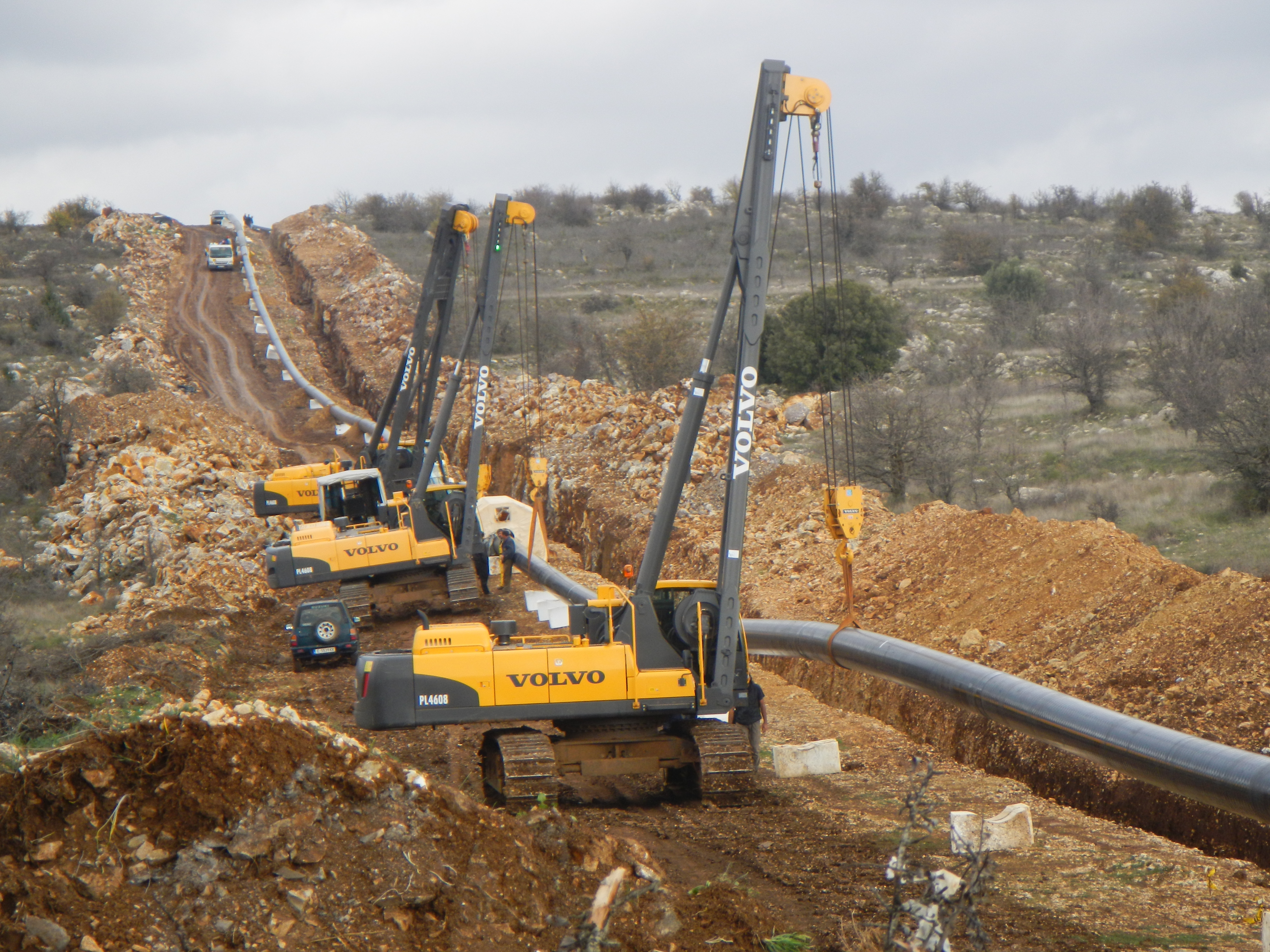June 2013, Vol. 240, No. 6
Features
Greece Getting High-Pressured Pipeline Boost

DESFA, the gas transmission system operator in Greece, has ordered state-owned public gas corporation DEPA SA to supply the country’s largest and most expensive high-pressured natural gas pipeline ever.
A large, on-going infrastructure development in the south east of Greece might be a rare sight in the current economic climate, but the DESFA Project has been in motion since last summer. DEPA SA expects the pipeline will be ready for gas transportation in late 2013, making a significant contribution to the Greek National Gas Transmission System.
DEPA SA has awarded the project to TÜV AUSTRIA HELLAS following an open public bid. Covering a distance of 164 km, the pipeline will start in the Athens suburb of Agioi Theodoroi, in the southeast, and end in southern Greece, at the PPC Megalopolis a power plant, which is located on the coast.
Pipeline contractor Joannou & Paraskevaides Ltd is the second-largest construction company in Greece and is using Volvo Construction Equipment’s excavator-based pipelayers for the first time after seeing a lowering-in demonstration during a visit to the U.S.
Environmental And Economic Benefits
To span most of the distance, 24-inch pipe will be used with about 16 km of 30-inch pipe used for a smaller section of the project. The pipeline will allow modern technology to be used in the production of electricity with minimal environmental impact.
The resulting production capacity will stabilize the electricity network in southwest Greece, satisfying the region’s growing demand. It will also allow other generating stations currently running on lignite, oil or gas to be replaced and, eventually, closed.
The project will result in a reduction of pollutants, including NOx, CO, SO² and CO².
To help out with the earth works and welding, J&P is using subcontractors, but has retained about 50 of its own employees. The earth works started in Megalopolis in the Peloponnese, and is moving toward Agioi Theodoroi. LNG, mainly from Algeria, and gas from Russia will be processed through the refinery and transported to the electrical power station in Megalopolis.
Power For The People
The pipeline project is slightly ahead of schedule, despite periods of heavy rain that made conditions slippery and difficult. Additionally, contractors have had to overcome steep slopes in the mountainous region of the Peloponnese region.
On the job site, there are five Volvo PL4608 pipelayers (80-ton tipping capacity) and three of the latest and smaller PL3005D models (51-ton tipping capacity).
“I was impressed by the machine’s excellent stability,” said John Joannou, responsible for machine procurement at J&P. “The 360-degree swing capability, cab comfort and the load-management system are much appreciated on this hilly project.”
The pipelayer operators quickly learned how the swing capability can help them in such conditions. By enabling the operator to point the boom uphill, this function effectively moves the machine’s center of gravity, increasing its stability when working on slopes.

The machines are being used to hold the pipe steady for welding and during laying-in operations. The larger PL4808 units are being used for laying-in, although the pipe size on the project would be well within the capability of the PL3005D series.
“I like the hydraulic cab-raiser very much, and I can look easily into the trench,” said pipelayer operator Panagiotis Sotiropoulus, adding he appreciated the cab comfort. “The Volvo CE pipelayers are very easy to understand and to operate, especially if you have an excavator operating background.”
In addition to the external boom-mounted light bars, the Volvo Load Management System provides real-time information to the operator of an in-cab monitor. The system continuously monitors the load in relation to the slope and the orientation of the upper structure.
A PL3005D was used with the pipe-bending machine in the pipe yard as well. In this application, the upper structure swing facilitates the process, using the motion to move the pipes 180 degrees smoothly from the stockpile to the bending machine.
As the undercarriage remains static, there is no disruption to the underfoot conditions – a benefit not to be underestimated in wet and muddy conditions. Not only does this speed up the bending procedure, it also minimizes wear on the undercarriage parts.
All eight of the Volvo CE pipelayers are equipped with Volvo’s CareTrack telematics system, enabling remote machine monitoring.
The pipeline project was designed to allow for the future extension in the wider area of the Peloponnese. For the main area of Megalopolis, it will enable major deficiencies in primary energy demand to be effectively subsidized with a cheap and environmentally friendly fuel.





Comments